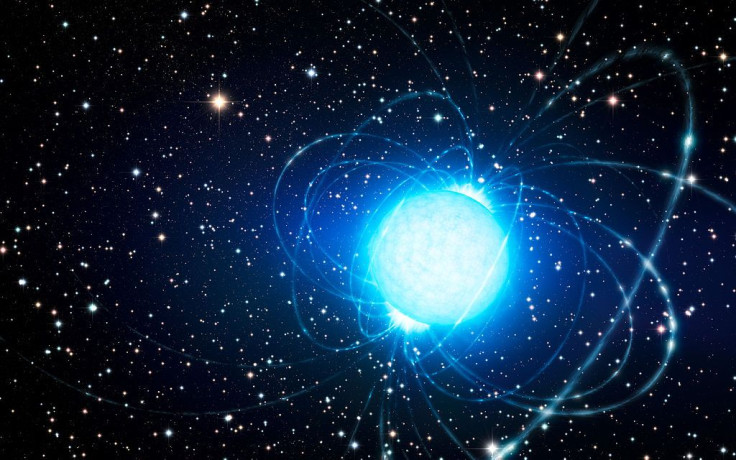Fast Radio Burst Mystery Deepens With Detection Of Recurring Signal

The past few days have been quite eventful for astrophysicists studying Fast Radio Bursts (FRBs) — intense bursts of radio emission lasting mere milliseconds. Last month, scientists were able to pinpoint, for the first time ever, the source of an FRB, and now, in a discovery that undermines all existing theories about what these mysterious signals are, astronomers have detected a recurring FRB.
Prior to this discovery, reported Wednesday in the journal Nature, FRBs — all 17 of them ever recorded — have appeared to be one-off events. As a result, most theories about the origin of these mysterious pulses have involved cataclysmic incidents that destroy their source, for instance, a star exploding in a supernova, or a neutron star collapsing into a black hole.
Now, with the latest finding — which stems from a discovery made in November, when McGill University Ph.D. student Paul Scholz was working with FRB data from the Arecibo radio telescope in Puerto Rico — all this is set to change.
“This research shows for the first time that there can be multiple FRBs from the same place in the sky — with the same pulse dispersion or distance. Whatever produces the FRB can't be destroyed by the burst, because otherwise, what would produce the next pulse?” co-author Shami Chatterjee from the Cornell University in New York said in a statement.
The FRB in question — named FRB 121102 — was first observed in 2012. Then, in mid-2015, when scientists decided to re-observe the region of the sky where the burst had originated from, they detected ten additional bursts over a span of hours.
“Right away, I knew that this was a big new part of the story of fast radio bursts,” co-author Paul Scholz, a graduate student at McGill University, told the National Geographic magazine. “It kind of changes everything.”
So, if FRBs are not created by one-off cataclysmic events, what gives rise to these enigmatic signals? The most likely candidate is a magnetar, which is an exotic type of neutron star with an extremely strong magnetic field.
“If it happened four years ago and it’s happening again now, it’s not some star that collapsed or black holes that merged,” study co-author Scott Ransom from the National Radio Astronomy Observatory, told National Geographic. “This is probably a very young, very fast spinning magnetar, in some local-ish galaxy, that occasionally goes into semi-outbursty form.”
For now, the study only serves to highlight the amount of work that needs to be done to confirm these findings and to understand the true nature of FRBs. Although it’s probably safe to say these signals have nothing to do with aliens.
© Copyright IBTimes 2024. All rights reserved.






















